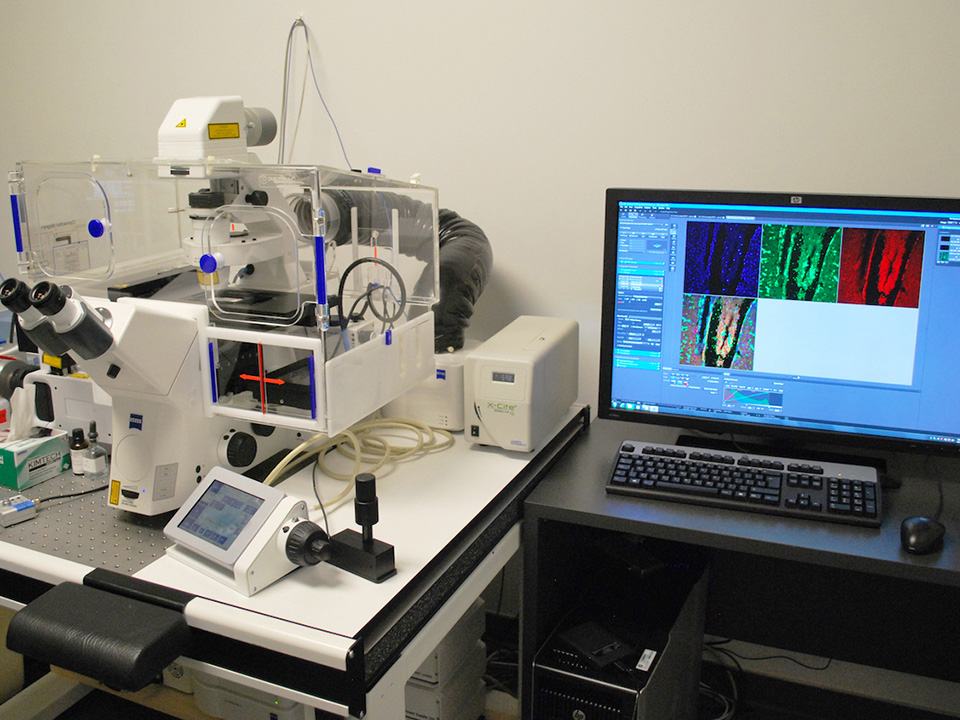Tool kit: Zeiss observer Z1 spinning disc confocal microscope
By Eleni Kanavas
Live cell imaging is a technique scientists use to study living cells with time-lapse microscopy. Dr. Marc Jeschke, a senior scientist in Biological Sciences at Sunnybrook Research Institute (SRI), acquired the Zeiss observer Z1 spinning disc confocal microscope to study and develop wound-healing therapy in burn patients using live cell fluorescent imaging.
Located in the Centre for Flow Cytometry and Microscopy in SRI’s Centre for Research in Image-Guided Therapeutics, the Zeiss inverted microscope is equipped with high-speed lasers and two light-sensitive cameras for rapid imaging. It allows users to take images faster than they could do with a regular confocal microscope. It also has a humidifying chamber with a temperature controller, heater, and carbon dioxide (Co2) gas mixer to allow for flexible air, humidity and Co2 regulation to maximize cell growth and survival.
“The cool thing with this microscope is if you take a plate, [then] you can have different wells with different conditions. You can set it up [so] that it goes automatically to each well and scans the different places and it will focus itself. You can set it up to do as many wells as you can on a plate,” says Cassandra Belo, a research technician in the Jeschke lab who uses the system for skin-printing projects in collaboration with researchers at the University of Toronto.
An integrated computer system allows users to drive all the functions of the microscope and offers a user-friendly interface for capturing and analyzing images with sophisticated software.
“That’s the key. You want to have a system that’s very powerful, but you [also] want software that people can use,” says Gisele Knowles, manager of the Centre for Flow Cytometry.
Lab members working with Dr. Kullervo Hynynen, director of Physical Sciences, and Dr. Isabelle Aubert, a senior scientist in Biological Sciences, also use the system, which enables them to conduct whole tiling series of brain cell images, including those of the hippocampus, within a few hours.
The system can also do fluorescence recovery after photo bleaching and fluorescence resonance energy transfer, two techniques that enable an area of a living, single cell tagged with fluorescent dyes to be interrogated for physiological response or activity.
Sunnybrook Research Institute installed the Zeiss spinning disc confocal microscope in July 2013. The system is worth $445,000 and was purchased with funding from the Canada Foundation for Innovation.






